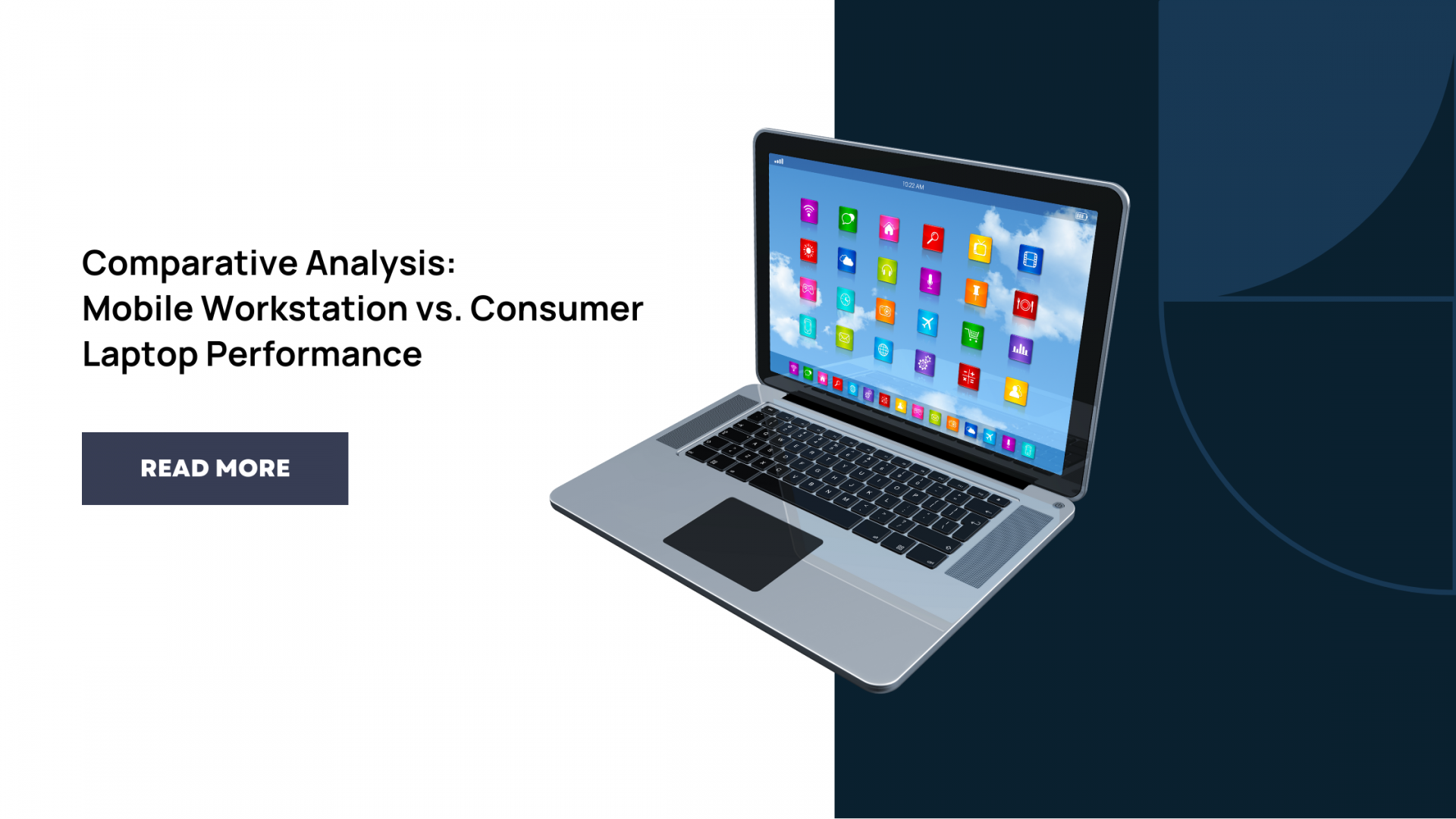
Choosing the right computing device can significantly influence productivity, efficiency, and overall success in professional endeavors. When it comes to portable computing solutions, the decision between a mobile workstation and a consumer laptop is pivotal. Despite superficial similarities, these devices cater to distinct user needs and usage scenarios, particularly in terms of performance capabilities and features. This comparative analysis aims to illuminate the nuances of mobile workstations and consumer laptops, highlighting their respective strengths and how they shape the user experience.
Defining the Devices:
Before delving into performance comparisons, it's essential to establish a foundational understanding of mobile workstations and consumer laptops.
Mobile Workstations:
Engineered for professionals who demand uncompromising performance and reliability, mobile workstations are purpose-built laptops equipped with high-end components. These devices feature potent processors, professional-grade graphics cards, ample memory, and robust storage solutions. What sets them apart is their rigorous testing and certification process, ensuring compatibility with specialized software applications prevalent in industries such as engineering, architecture, media production, and scientific research.
Consumer Laptops:
Consumer laptops appeal to a diverse range of users, including everyday individuals, students, and those requiring basic productivity. They prioritize portability, affordability, and versatility over sheer performance. With configurations featuring mainstream processors, integrated graphics, and moderate memory and storage options, these laptops are tailored for general computing tasks, entertainment, and web browsing. Unlike their workstation counterparts, consumer laptops are not optimized for intensive professional workloads, but instead offer a balanced approach to meet the needs of a broader audience.
Performance Divide:
The primary distinction between mobile workstations and consumer laptops lies in their performance capabilities, where the former holds a clear advantage.
Processing Power:
At the core of every computing device lies the processor, a crucial determinant of performance. Mobile workstations leverage high-performance CPUs from Intel's Xeon or Core i9 series, or AMD's Ryzen Threadripper lineup. These processors feature multiple cores, high clock speeds, and support for multithreading, enabling them to effortlessly handle computationally intensive tasks such as 3D rendering, simulation, and data analysis. Consumer laptops, while equipped with respectable processors such as Intel Core i5 or i7, or their AMD Ryzen counterparts, may struggle to match the processing power of their workstation-grade counterparts, particularly in demanding professional workflows.
Graphics Performance:
Another area where mobile workstations excel is in graphics processing capabilities. Armed with professional-grade GPUs from NVIDIA's Quadro or AMD's Radeon Pro series, mobile workstations are optimized for tasks like 3D modeling, CAD/CAM, and video editing. These GPUs feature certified drivers and specialized features tailored to professional workflows, delivering superior performance, stability, and reliability. In contrast, consumer laptops typically rely on integrated graphics or entry-level discrete GPUs, which may suffice for casual gaming and multimedia consumption but lack the horsepower required for professional graphics work.
Memory and Storage:
Memory (RAM) and storage play pivotal roles in determining system responsiveness and multitasking capabilities. Mobile workstations typically offer generous amounts of memory and storage to accommodate large datasets and resource-intensive applications. These devices may support ECC (Error-Correcting Code) memory for enhanced reliability and stability, crucial for mission-critical applications. Additionally, mobile workstations often feature fast PCIe NVMe SSDs or RAID configurations for rapid data access and seamless workflow execution. Consumer laptops, while offering sufficient memory and storage for general-purpose use, may not match the scalability and performance of their workstation-grade counterparts.
Reliability and Durability:
In addition to raw performance, mobile workstations stand out in terms of reliability and durability, making them the preferred choice for professionals who rely on their devices for business-critical tasks.
Build Quality:
Mobile workstations are engineered to withstand the rigors of daily use in demanding environments. They feature robust chassis designs, reinforced hinges, spill-resistant keyboards, and MIL-STD certification for durability. These features ensure long-term reliability and reduce the risk of downtime due to hardware failures. Consumer laptops, while increasingly featuring premium materials and construction, may not offer the same level of durability and ruggedness as mobile workstations.
Certifications and Compatibility:
Mobile workstations undergo extensive testing and certification to ensure compatibility with a wide range of professional software applications and industry standards. These devices are certified by software vendors such as Autodesk, Adobe, SolidWorks, and others, guaranteeing optimal performance and stability when running specialized software packages. Consumer laptops may lack these certifications, leading to compatibility issues and suboptimal performance when used for professional tasks.
Conclusion:
In conclusion, the choice between a mobile workstation and a consumer laptop depends on the specific needs and priorities of the user. While consumer laptops offer portability, affordability, and versatility for everyday computing tasks, mobile workstations excel in performance, reliability, and compatibility with professional software applications. For professionals engaged in content creation, design, engineering, and other specialized fields, investing in a mobile workstation ensures uncompromising performance and efficiency. As technology continues to evolve, we can anticipate further advancements in both mobile workstation and consumer laptop offerings. However, for now, the performance divide between mobile workstations and consumer laptops remains significant, underscoring the importance of making an informed decision based on the specific requirements of the task at hand. If you would like to delve into more comparative analysis pertaining to mobile workstation then check out this blog on Desktop Workstation vs Mobile Workstations: Unraveling the Best Fit for your professional needs.

Leave a Comment